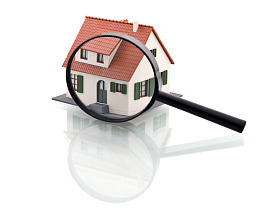 Ask An Agent: What Are Serious Red Flags During Home Inspection?
Ask An Agent: What Are Serious Red Flags During Home Inspection?
✉️ Want to forward this article? Click here.

In this week’s installment of Ask An Agent, a reader inquires about what findings from a home inspection should prove to be deal-breakers for the buyer. Coldwell Banker’s David Bediz offers up some insight.
Question: What findings from a home inspection should raise serious red flags? I am looking to buy a fixer-upper, so I expect that there will be a number of issues with the house. What are the things that, if they come up, I should run from the deal because they are going to be too much hassle to fix or are indicative of larger issues with the home?
Answer: Home inspections can be extremely important, especially in the purchase of a single family home where, frankly, a lot can go wrong. However, it’s important to realize that any home inspection is the result of opinion, speculation and obviously some facts. Most home inspection items can be remedied easily and cheaply, so it shouldn’t be a deal-breaker to have a laundry list of items to repair. However, it is important to know the gravity of any specific findings.
I usually advise my clients that the biggest unknown items in terms of the extent of the defect and the costs of remediation are the following:
- Structural damage (usually determined by noting cracks in plaster, visibly shifted floors, doors, or windows; visibly shifted brick on the exterior, etc.) may require underpinning to the tune of $25,000-250,000;
- Water intrusion and grading problems (usually noted with visible water stains, visible presence or odor of mold or mildew, measurable dampness on walls or floors, evidence of rot, insect damage, etc.) can be especially worrisome because water is very hard to control and a sump pump or other remedy is never guaranteed to resolve the issue;
- Insect infestation or damage (noted by visible trails in joists or floors, weak wooden members or even visible insects) is problematic because preventative treatment may not remedy significant structural damage that may be hidden behind walls or under floors;
- Roof issues (noted by visible water or stains present, visibly old and decaying shingles, visibly rotted rafters etc.) can result in high replacement costs;
- Windows (visibly old and/or non-functional, not double-paned or double-paned but with condensation visible trapped in panes, etc.) can be very expensive to replace (think at least $500 per window, in some cases up to $5000);
There are many other items that can be expensive but those listed above tend to have the biggest potential for high repair costs, and often require a second, specialized inspection to completely assess the cost of remediation. Again, the presence of an inspection issue like those listed above is not necessarily a deal-breaker (it just could be a big problem), so it’s important to try to get the whole picture before deciding to move forward.
In a condo or cooperative unit, a home inspection is mainly for the appliances and HVAC system (if present) since the condo/co-op board is responsible for most of the bigger ticket items like those above. It’s still important to gauge the overall health of any building you’re buying into because even if the board pays for a repair, you’ll end up paying part of it yourself in the end.
See other articles related to: ask an agent, dclofts
This article originally published at http://dc.urbanturf.production.logicbrush.com/articles/blog/ask_an_agent_what_are_serious_red_flags_during_home_inspection/1227.
Most Popular... This Week • Last 30 Days • Ever

With frigid weather hitting the region, these tips are important for homeowners to ke... read »

Today, UrbanTurf offers a brief explanation of what it means to lock in an interest r... read »

A new report from DC’s Office of Revenue Analysis highlights how millennials and wo... read »

The 30,000 square-foot home along the Potomac River sold at auction on Thursday night... read »

An application extending approval of Friendship Center, a 310-unit development along ... read »
DC Real Estate Guides
Short guides to navigating the DC-area real estate market
We've collected all our helpful guides for buying, selling and renting in and around Washington, DC in one place. Start browsing below!
First-Timer Primers
Intro guides for first-time home buyers
Unique Spaces
Awesome and unusual real estate from across the DC Metro













